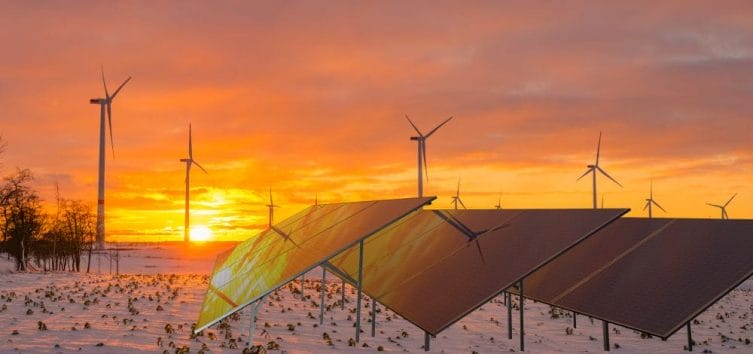The Role of Seasonal Weather Patterns in Energy Market Forecasting
Seasonal weather isn’t just a talking point for meteorologists—it’s one of the most powerful forces shaping global energy markets. From heating demand in the dead of winter to renewable generation swings in summer, energy pricing and grid reliability are inseparably linked to long-range weather trends. For traders and utilities alike, anticipating these seasonal shifts can mean the difference between capitalizing on market opportunities or being caught unprepared.
At Climavision, we’ve built Horizon AI S2S (Subseasonal-to-Seasonal) to bring greater clarity to long-range forecasting. By combining proprietary data inputs, AI-powered modeling, and daily updates, Horizon AI S2S gives market participants a sharper edge in understanding what lies ahead.
And as we look toward Winter 2025–2026, our latest outlook provides important signals for both energy traders and utilities.

In Summary
- Seasonal weather drives energy markets by influencing demand, renewable generation, and pricing volatility.
- Horizon AI S2S delivers superior long-range forecasts, outperforming ECMWF SEAS5 with daily updates and AI-powered accuracy.
- Winter 2025–2026 outlook points to warmer-than-normal conditions across much of the U.S. and Europe, reducing heating demand and easing winter load stress.
- Regional risks remain: drier conditions in the southern U.S., wetter signals in the Pacific Northwest, weaker wind in the East, and stronger solar output in the Central U.S.
- Actionable insights for traders and utilities include better hedging, renewable balancing, and resiliency planning—accessible through Climavision’s full deep dive reports.
Why Seasonal Forecasting Matters for Energy Markets
Energy markets thrive—or falter—based on weather-driven supply and demand.
- Demand impacts: Heating demand spikes during colder-than-normal winters and drops sharply in warmer years. For natural gas and power traders, that difference can reshape entire market curves.
- Supply impacts: Hydro generation, solar output, and wind strength all depend on seasonal precipitation, irradiance, and wind patterns. Even small anomalies can ripple through capacity and pricing.
- Market volatility: Seasonal miscalculations can trigger dramatic price swings. A drier-than-expected Southwest or weaker wind season in the East can alter fundamentals overnight.
Understanding these dynamics well in advance allows traders to manage risk, utilities to plan load, and asset operators to maximize efficiency.
Horizon AI S2S: A New Standard in Seasonal Forecasting
Traditional seasonal forecasting models update once per month and are often built on older, less responsive methodologies. Climavision takes a different approach.
Horizon AI S2S provides:
- Extended range forecasts: From 15 days to 2 years into the future.
- AI-driven modeling: Proprietary neural networks trained on decades of climate simulations and billions of observations.
- Proven skill: Consistently outperforms ECMWF SEAS5 across accuracy, skill score (CRPSS), and error reduction (MAE).
- Daily updates: Ensuring fresher, more reliable signals compared to monthly-only outlooks.
- Actionable outputs: Available in both deterministic and probabilistic formats, designed to support trading desks, utilities, and risk managers.

With Horizon AI S2S, long-range weather isn’t a blind spot—it’s a competitive advantage.
Winter 2025–2026 Outlook: What to Expect
Our most recent Horizon AI S2S outlook highlights several key risk signals for the upcoming winter.
Temperature
- Above-normal temperatures are most likely across much of the U.S. and Europe, with the strongest warmth in Mexico and the U.S. Southwest.
- Implication: Reduced heating demand overall—a bearish signal for natural gas pricing and lighter load stress for utilities.
Precipitation
- Southern U.S. expected to trend drier than normal, especially in the Southwest and Florida.
- Pacific Northwest likely to see wetter conditions.
- Implication: Hydro generation potential may dip in the South while stronger capacity in the Northwest could affect regional pricing and grid balance.
Wind
- Below-normal wind speeds are forecast across the Eastern U.S. and parts of Western Europe, including Spain and France.
- Implication: Lower renewable output in major eastern markets could tighten supply, creating bullish conditions for power pricing.
Solar
- Near to above-normal solar irradiance expected across most regions, with the strongest signals in the Central U.S.
- Implication: Higher solar generation could help offset weaker wind production, stabilizing renewable portfolios.
Overall Takeaway:
Winter 2025–2026 is shaping up as warmer and drier than average across much of the U.S. and Europe. For traders, the season may lean bearish on gas demand but bullish in regions where renewable generation shortfalls tighten supply. For utilities, renewable balancing and water management will be the primary concerns, with localized cold snaps still posing operational risks.
Implications for Energy Traders
For traders, Horizon AI S2S provides months-ahead visibility into conditions that will directly influence price action. With clearer insights, desks can:
- Time hedging strategies around natural gas demand risk.
- Capture cross-ISO arbitrage opportunities by tracking weather-driven regional imbalances.
- Factor hydro and renewable variability into power contract decisions.
By reducing uncertainty, traders can approach the winter with more confidence in their market positions.
Implications for Utilities
Utilities face a different but equally pressing challenge: ensuring reliability while managing renewable variability. With S2S insights, utilities can:
- Improve load forecasting accuracy, especially for balancing solar and wind.
- Anticipate water resource stress in drier regions and plan for hydro limitations.
- Strengthen resiliency planning, outage preparation, and resource allocation well ahead of demand peaks.
Longer lead time means better decisions—and more resilient operations.
Access the Full Deep Dive Report
This blog only scratches the surface of Climavision’s seasonal insights. For a deeper analysis of Winter 2025–2026 signals and their implications for your business, we’ve prepared two dedicated reports, specific to Energy traders and utilities.
Request Your Deep Dive Report →
A Powerful Driver of the Energy Market
Seasonal weather patterns remain one of the most powerful drivers of energy market fundamentals. With Horizon AI S2S, Climavision is helping energy traders and utilities alike move beyond uncertainty, transforming long-range forecasts into actionable intelligence.
As we enter Winter 2025–2026, the message is clear: warm signals, renewable variability, and regional water stress will define the season. The question is—will you be ready?
Get the full Climavision Winter 2025–2026 Outlook today and stay ahead of the market.
Request Your Deep Dive Report →





